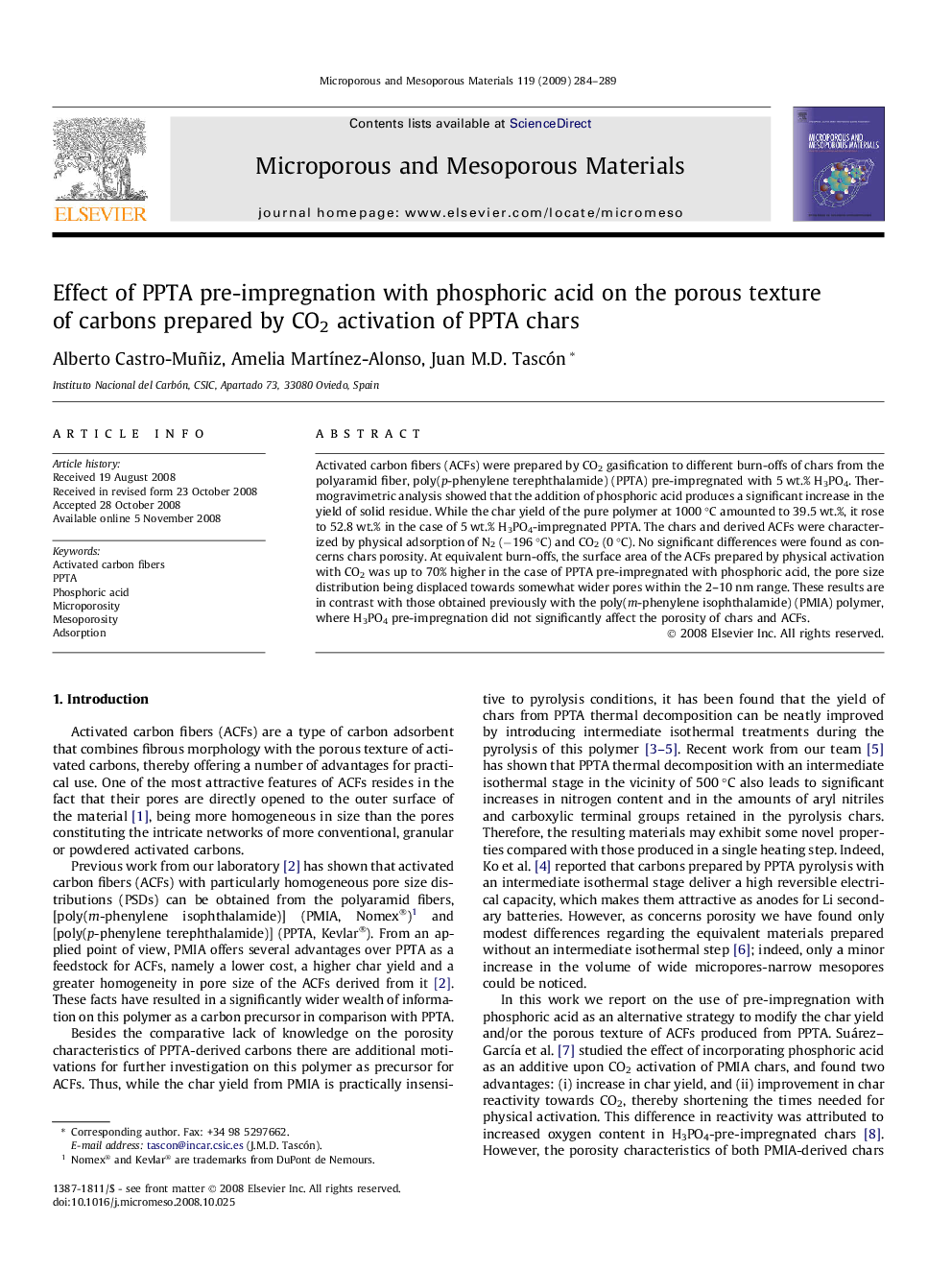| Article ID | Journal | Published Year | Pages | File Type |
|---|---|---|---|---|
| 76513 | Microporous and Mesoporous Materials | 2009 | 6 Pages |
Activated carbon fibers (ACFs) were prepared by CO2 gasification to different burn-offs of chars from the polyaramid fiber, poly(p-phenylene terephthalamide) (PPTA) pre-impregnated with 5 wt.% H3PO4. Thermogravimetric analysis showed that the addition of phosphoric acid produces a significant increase in the yield of solid residue. While the char yield of the pure polymer at 1000 °C amounted to 39.5 wt.%, it rose to 52.8 wt.% in the case of 5 wt.% H3PO4-impregnated PPTA. The chars and derived ACFs were characterized by physical adsorption of N2 (−196 °C) and CO2 (0 °C). No significant differences were found as concerns chars porosity. At equivalent burn-offs, the surface area of the ACFs prepared by physical activation with CO2 was up to 70% higher in the case of PPTA pre-impregnated with phosphoric acid, the pore size distribution being displaced towards somewhat wider pores within the 2–10 nm range. These results are in contrast with those obtained previously with the poly(m-phenylene isophthalamide) (PMIA) polymer, where H3PO4 pre-impregnation did not significantly affect the porosity of chars and ACFs.
